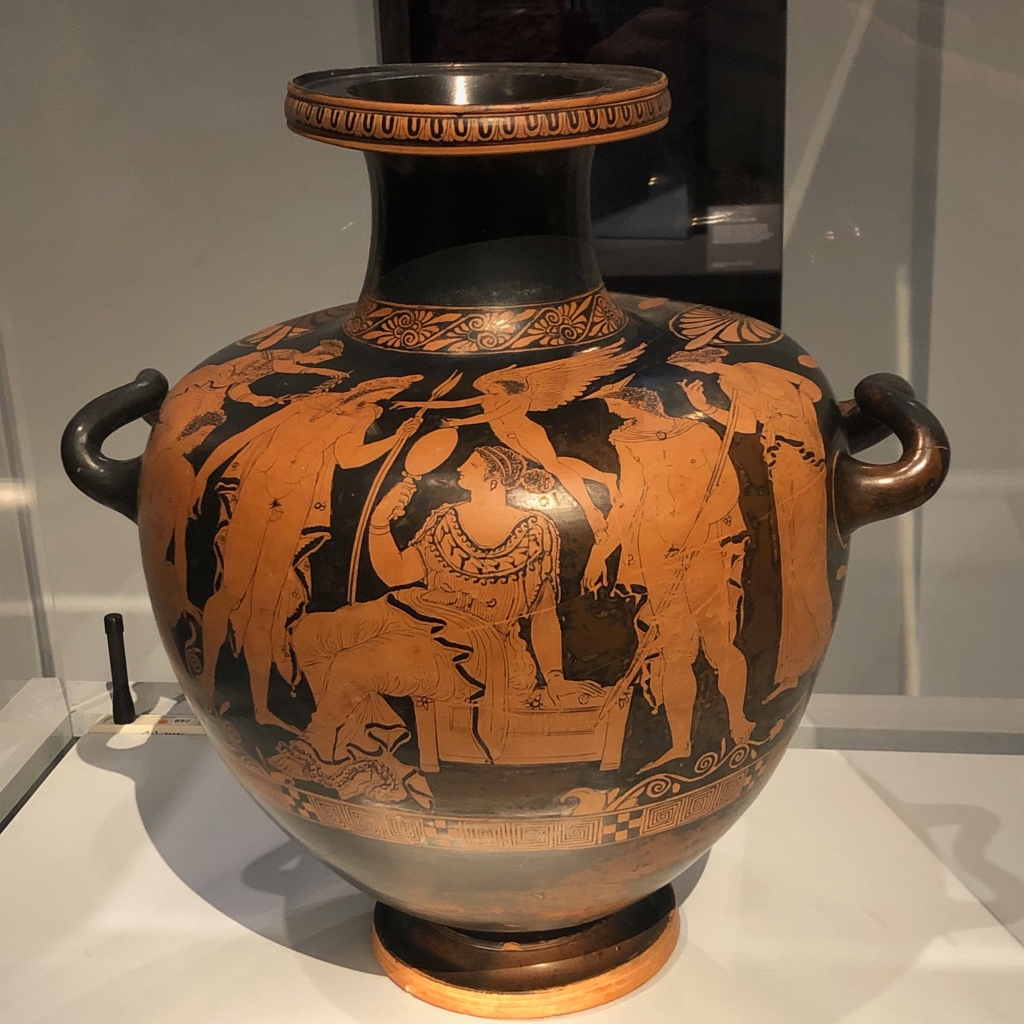Earlier this week, I went to the British Museum to see their new exhibition, TROY: Myth and Reality. I was very pleased to see that loads of people are still interested in this story, as evidenced by the queues and crowds around each object in the collection, and on a Tuesday afternoon in early January no less.
I posted some photos & comments from the museum on Instagram, here.
The exhibition was really interesting – covering the details of the Trojan War, then moving on to the excavation of Hissarlik, a place in Turkey believed to be the site of Troy. The final part of the exhibition focused on the story and storytellers, making a point to connect the characters to contemporary issues: Achilles to veterans with PTSD; the Trojan women to victims of sex trafficking.

As I walked through the collection, of course I was impressed by the urns and frescoes that are over 2000 years old, and the beautiful Italian Renaissance sculptures. But I was surprised by my impatience to get to the last part of the exhibit, which I could see behind the bust of Homer… printed on the far wall, there was a quote from contemporary artist Eleanor Antin: “I wanted to humanise this woman, to find her beneath the covering of stories that obscures her to us.”
She means Helen! I’ve got to go over there.
Of course, Helen was there in the first part of the exhibition, too – but I’m less interested in the Ancient Stuff ™ and more interested in the contemporary relevance and different interpretations of the story. When I first started working on ideas around Helen (nearly 10 years ago!), I read as much as I could get my hands on: the Iliad, the Odyssey, books about mythology and history, novels and poems inspired by the Trojan War from Tennyson to Margaret Atwood. The small museum plaques describing the objects didn’t have many surprises for me, since they only have room for a basic summary.
So I skipped ahead to the archaeology section of the exhibit, focusing on Heinrich Schliemann’s excavation of the settlement now accepted to be ancient Troy. I should really say, settlements, since there were multiple cities discovered in layers in that spot. (Check out the British Museum’s blog if you want to geek out about this.) Like many archaeologists in the late 19th century, Schliemann destroyed a bunch of things by being in a rush to make a discovery, and made outlandish claims because he badly wanted them to be true. There’s a photo of his wife Sophia wearing ‘the Jewels of Helen’ which were found in the ruins, but they were later dated to 1000 years before Helen was in Troy, so there’s no way our girl could have worn them.

“Homer was a poet and not a historian. It remains immensely difficult to link the Iliad specifically to the archaeology of Troy.” – Alexandra Villing & Lesley Fitton for the British Museum.
Looking at the artefacts discovered from millennia of settlements at Troy, I realised that the physical legacy of the Trojan War is not particularly relevant to me as I come to the end of writing the script for HOT (Helen of Troy). Those urns and pots and coins certainly evoke a sense of awe at the history of humankind and the immense periods of time that have passed since they were created. But the objects are stuck in c. 1750 BCE – and the stories are still alive, still being told and reinterpreted.
One of the goals of my retelling is to treat Helen like a human being – someone who made choices and experienced joys and horrors and deserves our empathy instead of being blamed for ten years of death and destruction. Standing in front of Eleanor Antin’s The Judgment of Paris, it struck me: Helen doesn’t need to have really existed for us to feel empathy for her. The story itself is still present in our culture after 3,000 years; that’s real enough for me.

PS: tickets for HOT (Helen of Troy) are available now on The Cockpit’s website here. Performances are coming up next month, 5-8 February 2020!
Leave a comment